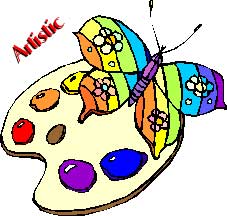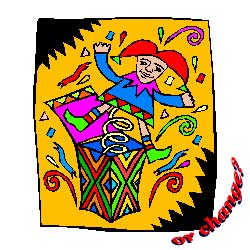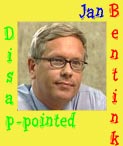 Lingual hairsplitting
Lingual hairsplittingIn
a Dutch article on
Managementsite by
Leo Kerklaan and
Marjan Hoogendijk present their opinion about commonly used
management models to organize work. They state that those “popular standard
models” often are directed at quality improvement. The use of ‘standard
models’ is something I would criticize. To start the word standard has several meanings. First of the word standard already makes clear that it is something that is commonly used. Like in the ISO 9000 standard or the IEEE standards, which both are
models of something you could find in the real world. And these kinds of standards are meant to make the connection between different
models possible. Secondly standard means: something to keep a something else standing. For example a musical standard. Standard is also used to make clear that something happens regularly. As when you say that Robert's reaction is standard.
Kerklaan and Hoogendijk seem to use standard in its first meaning, which however makes the combination of standard and
model rather strange. Because a
model is a standard, a means to simplify the complexity of the world, to make it understandable. A way of looking at the world, that makes the causal relations between elements, that influence each other, visible. And in the end a
model is meant to give a theory of a causal relationship a link to being used in reality.
Or are Kerklaan and Hoogendijk saying that ‘standard
models’ are
models that are commonly uses. In that case the combination of ‘popular’ and ‘standard’ is superfluous, because popular means common.
So it would have been more sensible if they had used “popular
quality models”, because that is what the article is criticizing.
Technical critiqueOf course I do not only have lingual critique. To start with their piece has a big technical rattling structure. Take for instance the sentence:
- Organizations are being convinced to use the model by showing best practices, or using a ‘award’ approach in which an authority gives away the award to an excellent organization. However, as said before, there is little systematic research that supports the positive effects.
This gives a question:
- What ‘positive effect’ is meant: the effect of the model, the award ceremony, the research? I assume they mean the models.

Next I wonder if a model has an effect? Is it not more likely that it has influence? So the model influences the behaviour of its user, and the behaviour has the desired effect. If the model itself has effect, we are probably talking about a supermodel or a mechanical model. Effect is about changing reality by direct action. That a model does not change reality is a good thing, because that would mean that every time someone has an idea about what the world should look like, that world would change.
A second dissonant in the technical structure is that the writers disqualify the models, because they are used incorrectly, need to much time and money and do not deliver on what was promised. But these disqualification are only presented when they need to qualify their own model. It seems that the writers think that the cause lies with the models.
So what I see is, that the article wishes to replace one hammer, with another on the basis of the fact that the first hammer forces me to use it wrong. However only after I looked at the use from the perspective of the second hammer. Which brings me to the third point of critique. The article is critical of quality models, without ever showing the model that is used to judge.
However what it looks like to me, is that Kerklaan en Hoogendijk use a model that is quite similar to the quality models they judge. According to me they use the ideas behind their model:
- To reach a goal one needs to set a goal
- A goal is flexible, and gives meaning to what you do
- A goal is not rigid, but gives direction and can change over time, through the experiences one has trying to reach his goal.
By using this approach while judging the quality models, the seek the fault with the models and keep their users out of the wind. So in a way Kerklaan en Hoogendijk say that all models inherently cause wrong use, except for their model. But as with all models, it is not the model that causes the problems, the problem is that they are made and used by humans.
Internal critiqueWhat really bugs me about the article by Kerklaan and Hoogendijk, is that it leaves out human traits.
First of all human are not able to comprehend reality in its totality. Which declares our need for the use of models, extracts, structure and systems.
Secondly people do not like uncertainty. Which also declares why we use models, structures, systems and rules.
Thirdly people differ in the way in which the react to reality. Which again declares our use of models, structures, rules and systems. That is also why nobody has exactly the same learning style, we use different tactics to come to a solution and we have differences in taste.
Fourthly humans have trouble changing. To start with because it creates uncertainty. Secondly because they become afraid of what the effect of the change will be for their reality. And lastly because changing takes time.
Although the model of Kerklaan en Hoogendijk takes this human side into account, their critique on all other models however does not consider the human side. Whereas all models are a consequence of human behavior. All models are meant to make reality manageable. The models are meant to reduce uncertainty. They are meant to help humans change. That is also what is going wrong with all models. The models forget to address the most important motivator humans have: their freedom to decide. Behavior that can be found in babies. They play longer with toys that are under their control, than with toys controlled by others.
 Solutions
SolutionsSo why would the Kerklaan and Hoogendijk model be better, than other models? It gives humans a grip on making their reality managable. Their model is not a straightjacket, but a handle. And in the basis this is what all models do, but as they become more and more complex they create the wrong behavior. They make their users dependent, wanting to object and fight the change the model proposes. They create political behavior, strictness and risk averseness.
LeadershipWhat does this mean for leadership? To start a leader wil have to address his own shortcomings and that of his fellow humans. Change takes time and is not a result of introducing a new model. Taking the ideas of Kerklaan en Hoogendijk means that the leader picks a model that clarifies what his daily behavior is.
The leader should be permanently attentive to prevent the model from becoming the goal instead of what it was meant for: quality improvement. So it is not enough to choose a model to realize a goal. The correct implementation of the model has to become one of the goals. The leader could almost choose a second model to check the implementation of the model that will create all changes. Which also means that the leader can not let external personnel implement the new model without checking their progress and checking if everybody is satisfied with how the model effects the organization.
You might say that implementing a new model is a full time job next to the leadership job. So the question comes to mind if changing your model is the best course of action?
 Maybe the most important thing about, expectations is not to make them external. You should not expect others to realize your goals, or you could say your expectations. In a sense, the only thing you can expect of others is that their expectations are the same as yours. Or even better, their expectations go beyond yours and support yours
Maybe the most important thing about, expectations is not to make them external. You should not expect others to realize your goals, or you could say your expectations. In a sense, the only thing you can expect of others is that their expectations are the same as yours. Or even better, their expectations go beyond yours and support yours




























